Can You Move a Bird Nest Near Your Home?
Updated: Apr. 26, 2023
Birds have a habit of building nests in inconvenient places. Find out when and how you can move a bird nest if needed.
Meet the Birds Next Door
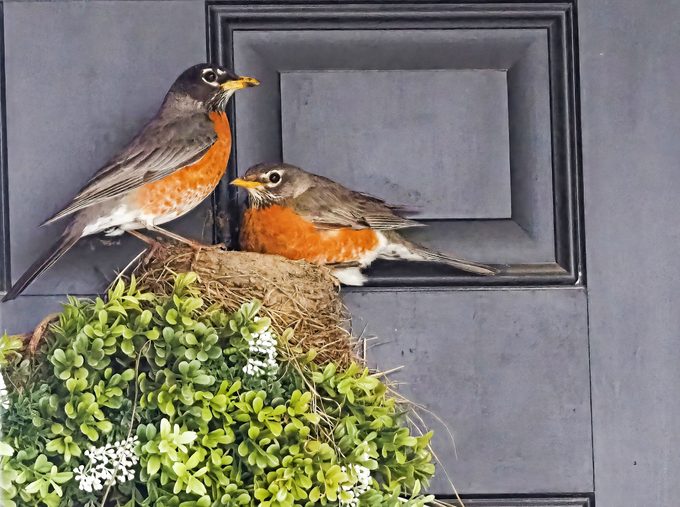
When birds start a family close to your home, it offers a thrilling chance to observe their behavior. But if they choose to place the abode in a high-traffic area, it can be challenging too. Can you move a bird nest? Before you do, there are some factors to consider, including whether or not it’s legal to do so. Here are some pointers on how to be a good host during nesting season.
Learn to identify bird eggs by color and size.
Enjoy the Front Row Seat
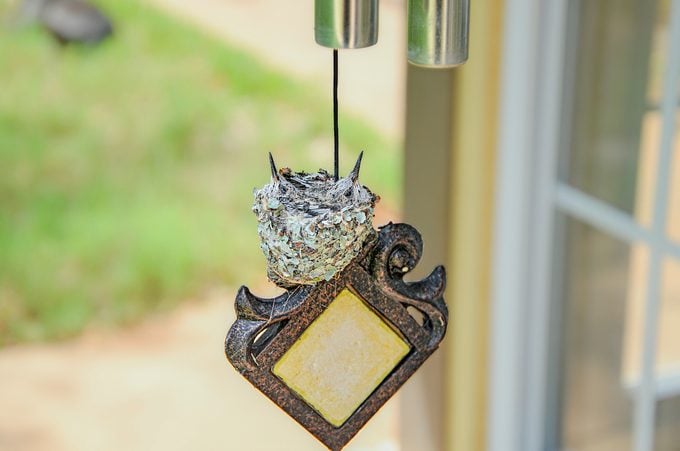
Most birds are secretive nesters. So when a pair chooses a visible spot, such as under the eaves of a porch, it provides a rare opportunity to watch their family life up close. If the nest is visible from a window, you have a perfect situation: Most birds quickly adapt to being watched through the glass, especially if you avoid sudden movements near the window.
Writing notes on the things you observe each day makes the process more interesting and educational. Can you tell when the adults have started incubating or when the eggs have hatched? Can you see what kind of food they’re bringing to the youngsters?
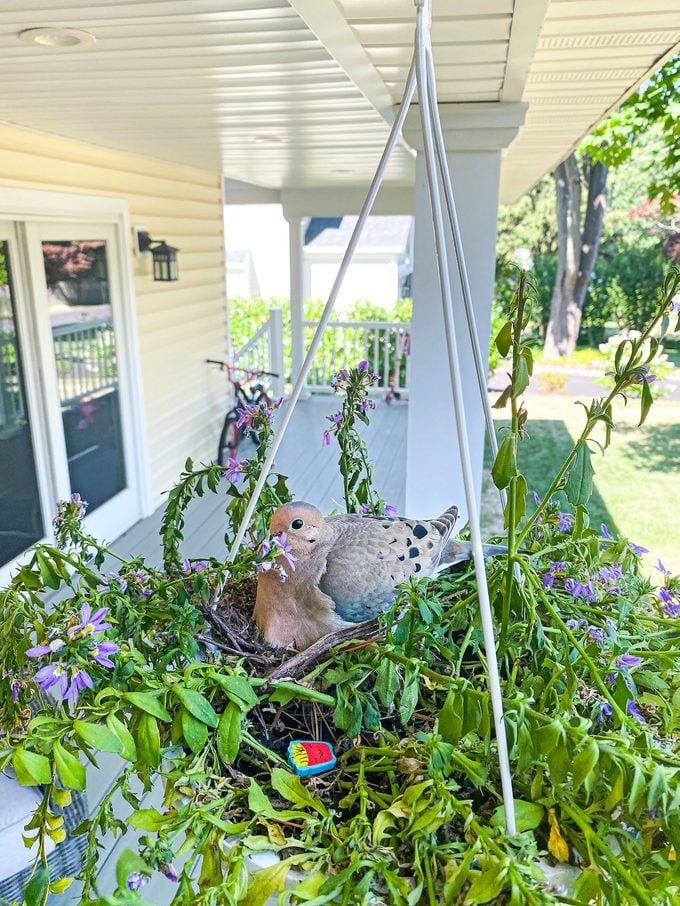
Generally it’s best not to approach the nest too closely. But if you can’t resist peeking in to check the contents—no more than once every few days—it’s OK. Do it when the parents are away, toward the middle of the day, not early in the morning when it’s cooler and the birds may be feeding more actively. And steer clear of the nest when the young are nearly full-grown, or they may jump out before they’re totally ready.
Parent birds are very good at taking care of their families on their own. If you’re eager to help them, avoid using pesticides during the nesting cycle, always keep cats indoors and keep feeders filled, especially during cold or wet weather.
Learn everything you need to know about hummingbird nests.
Can You Move a Bird Nest With Eggs in It?
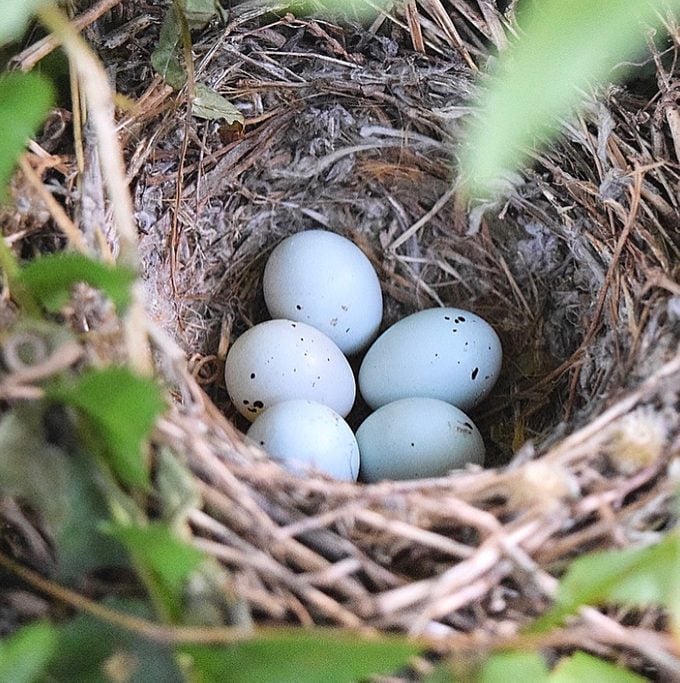
Sometimes bird parents will place their nest in a rather inconvenient spot, such as right next to the front door or the sidewalk, or even in a wreath hanging on a door, where it’s almost impossible to avoid disturbing them. However, moving a bird nest usually isn’t an option.
Disturbing bird nests isn’t just unkind, it’s also illegal in most cases. A federal law, the Migratory Bird Treaty Act, offers broad protections to birds, plus their nests and eggs. A few nonnative species are excluded, such as house sparrows and European starlings, but as a rule, it’s best to assume that all birds in your backyard are protected.
If for some reason it’s essential to move an active bird nest, contact your state or regional wildlife department and ask for help. These wildlife professionals have the necessary permits to relocate birds. (An active nest is defined as one in which a bird has either laid eggs and/or is sitting on the nest). But be aware that birds often abandon a nest after it’s moved.
Discover how orioles weave elaborate nests.
Avoid the Area if Possible
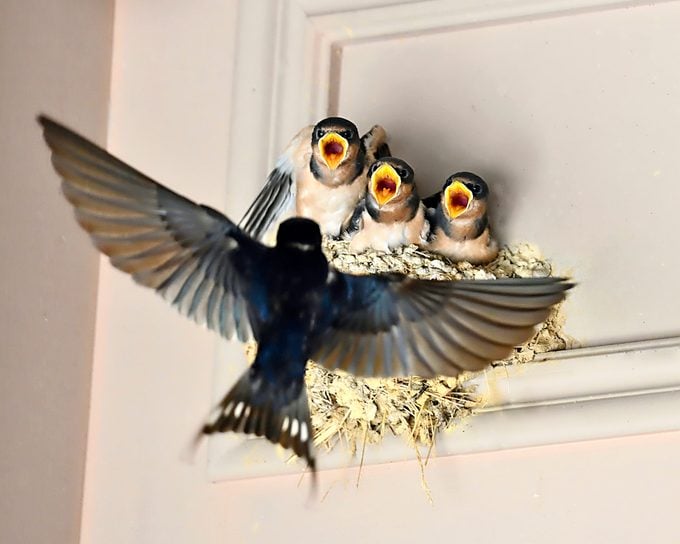
An easy solution is to avoid the nest location, such as by using a different door or sidewalk, if possible. The nest won’t be occupied long—it’s typically about a month from the time the first egg is laid until the young fledge. For robins and house finches it’s about 30 days, for northern cardinals it’s about 25 days and for barn swallows it’s about 40 days.
Psst—you won’t believe how fast mourning doves build nests.
If switching your own route isn’t possible, move slowly and quietly when you pass by, and the birds may adapt to your presence. Even if they continue to leave when you approach, it’s not a problem if they leave gently instead of in a panic. With a little patience, having wild birds as your closest neighbors can give you rewarding insights into one of the small marvels of nature.
Bird Nest on Front Door Wreath
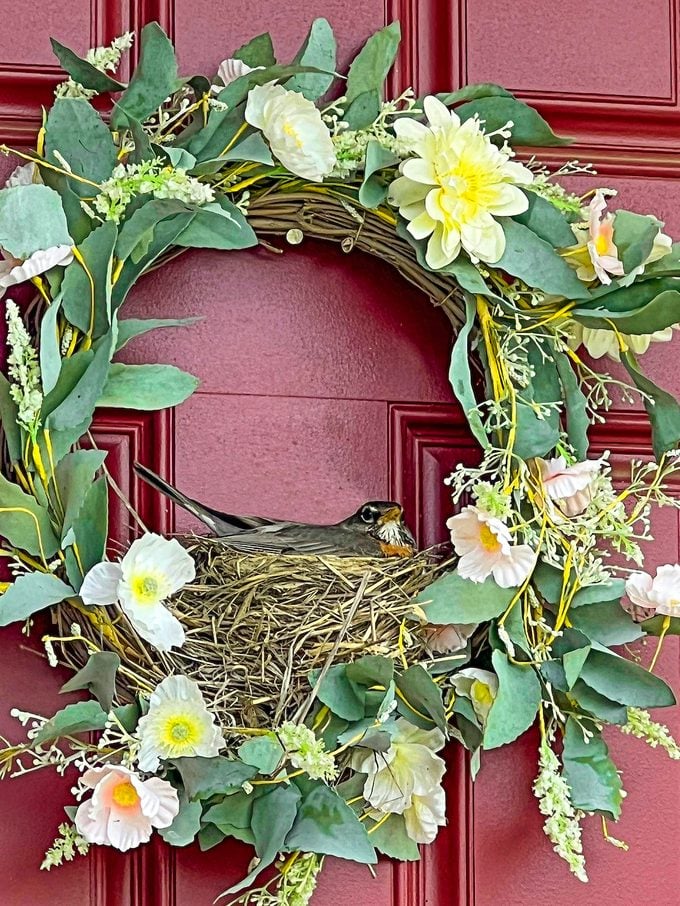
“Wrens made a nest and laid eggs on my front-door wreath. What’s the best way to handle the situation?” asks Birds & Blooms reader Gloria Sfameni.
It can be a challenge when birds move into a high-traffic area. Because native birds such as wrens are protected by law, it’s illegal to destroy or move their nests.
Songbirds that nest around houses may become very tolerant of the presence of humans, so you may be able to open and close the door gently without disturbing them. Or you might consider using another door until the eggs hatch and the young wrens leave the nest, which should take less than a month. If neither of those options will work, contact your state wildlife agency and ask what you should do.
Check out proven tips to attract nesting birds.
Worthy Watching
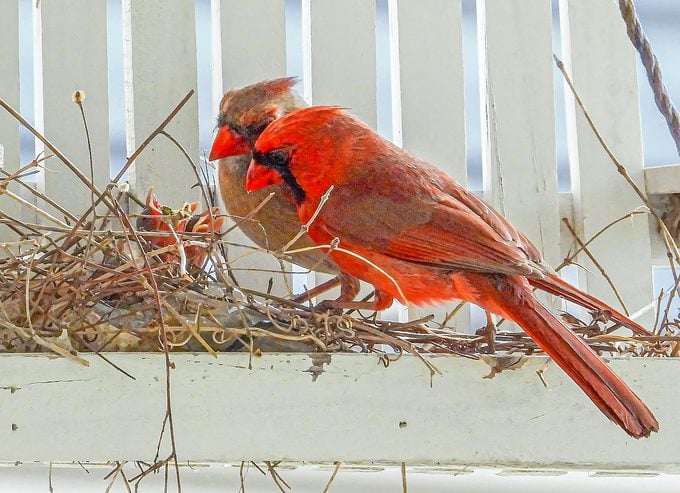
Anyone who finds an active nest can contribute to science by participating in NestWatch, a special program of the Cornell Lab of Ornithology. Go to nestwatch.org for a wealth of information about how to observe nesting behavior in a responsible way and how to record data that contributes to ornithology and bird conservation efforts.
This is the only bird nesting material you should put out.
When and How to Move a Bird Nest
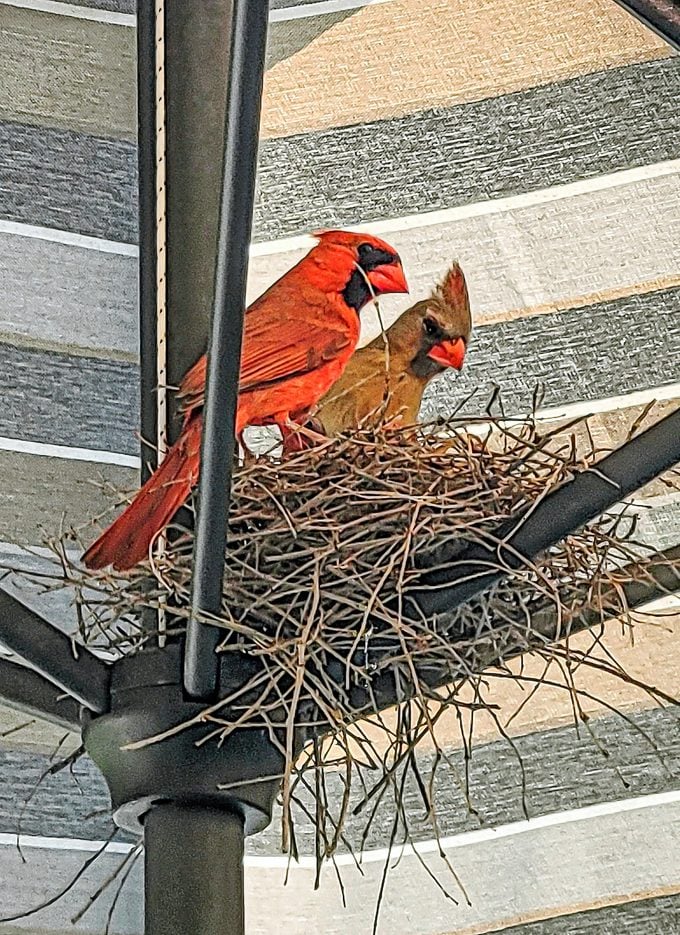
The only time you can move a bird nest is before it gets too far along. Then, find a way to block off the area so the birds don’t return. For instance, a reader noticed the beginnings of a robin’s nest in her patio umbrella. She decided to keep the umbrella closed, unless she was actually sitting under it.
What about after the birds are done nesting? One thing to consider: It’s not uncommon for some species to re-use their nests, whether in the same season or the following year. Sometimes, other species will move in after the original builders have left. And the nest parts may even be scavenged by other birds for building their own nests.
Whenever possible, just leave an old bird nest where you find it. If you have to move it, be sure the birds are gone and no new birds have moved in. This way you’ll do what’s best for wildlife, and avoid breaking the law.




















